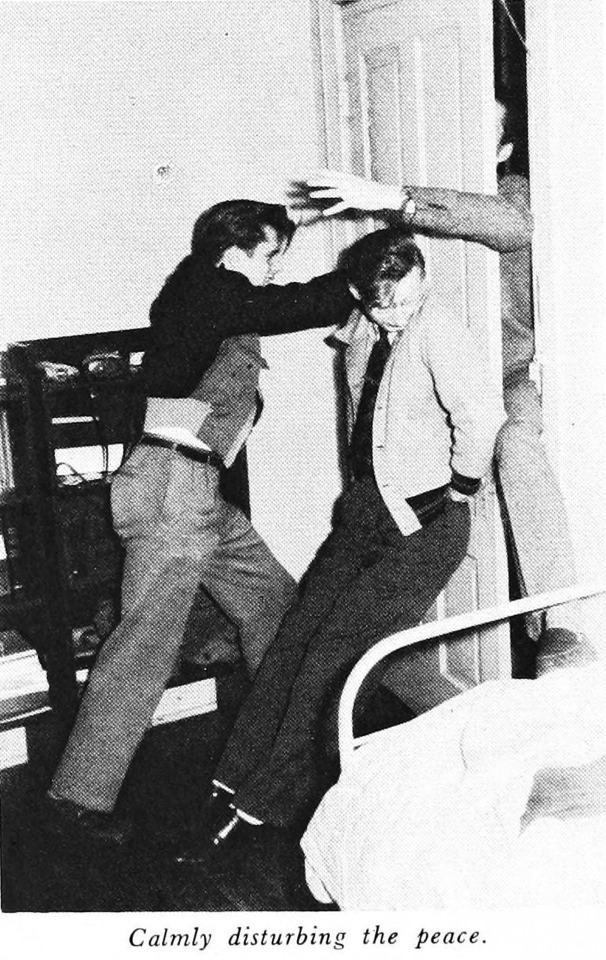#Moody Bible Institute
Text

Electricity flashes from the thimble-topped fingers of a “preacher-scientist,” August 1955
Photograph by the Moody Bible Institute
#photography#black and white#1950s#vintage#moody bible institute#electricity#oddities#frankensteinian
113 notes
·
View notes
Link
by Dr. John Koessler | A preacher once lamented, “My preaching is better than my praying, and my praying is better than my life.” What he meant was that our prayers often reflect our aspirations more than they do our practice. But sometimes, our praying falls short as well. Why do we pray poorly? We aren't...
#Today in The Word#Moody Bible Institute#Dr. John Koessler#Why We Pray Poorly#Luke 22:39-46#January 20#2023#todayintheword.org
8 notes
·
View notes
Text
Divine inspiration guarantees the truthfulness of God's word but not the accuracy of our interpretation. The Bible is infallible in all it affirms to be true and therefore absolutely reliable. We, however, may be fallible in our interpretation of the Bible.
~ Moody Bible Institute
0 notes
Photo

Kyeong-shil Lee "Jo Hye-ryun, preparing for a PhD in Moody Bible Institute" Commentary junior rave reviews (Let's take a look together)
0 notes
Photo

"Calmly disturbing the peace." From Moody Bible Institute's 1949 yearbook.
Here's my gallery of unusual imagery from vintage college yearbooks.
Wondering about this post? Wait for the dissertation (TBA).
For now: Weblog ◆ Books ◆ Videos ◆ Music ◆ Etsy
71 notes
·
View notes
Text
once you open your eyes to poetry all things become it (reading the moody bible institute student handbook)
3 notes
·
View notes
Text
Religious conservatives have been fighting for years to get prayer back into America’s schools, and this year, the Supreme Court gave them what they wanted. In Kennedy v. Bremerton, the six conservative justices affirmed a coach’s right to offer a prayer after a football game.
But what is really astonishing is that this decision will over time prove to be less monumental than the Court’s other big religion decision this term. In Maine’s Carson v. Makin, the Court ruled 6–3 that a state could not exclude private religious schools from receiving public funding only because of their religion. In prospect, it opens up a vast new world of publicly funded religious schools—using tax money, potentially—to teach kids that dinosaurs walked with humans, that girls primarily come into this world to grow up and bear children, or that only heterosexuals deserve rights. Maine quickly passed a law to keep public money away from avowedly anti-LGBTQ schools, but legislators will only be able to play anti-discrimination whack-a-mole for so long. Carson, not Kennedy, is the decision that could reshape the relationship of Church and school in America—even though prayer in school has long been the symbolic victory conservatives were intent on winning.
The reasons that prayer in school became the hallmark fight of this movement go back to the middle and late 20th century, when the Supreme Court decided a series of cases that conservatives thought “kicked God out of the schools.” In 1962, in Engel v. Vitale, the Supreme Court ruled that public schools could not require students to recite a state-written prayer. Politicians rushed to condemn the decision. Representative Frank Becker of New York called the decision “the most tragic in the history of the United States.” Ex-President Herbert Hoover joined ex-President Dwight Eisenhower in protesting the decision, declaring it the end of the country’s public-school system.
To Americans who cared a lot about religion, however, the decision seemed like a good one. Conservative evangelical Protestants looked askance at the bland wording of the prayer—it left out any specific mention of Jesus—and they did not approve of government-written prayers in the first place. From the fundamentalist citadel of the Moody Bible Institute, in Chicago, President William Culbertson wrote, “Christians who sense the necessity for safeguarding freedom of worship in the future are always indebted to the Court for protection in this important area.”
3 notes
·
View notes
Text
#youtube#faith#biblegateway#christian faith#search the scriptures#youversion#health#bible scripture#bibleverse#jesus
0 notes
Link
by Dr. John Koessler | During some television commercials, you will see text scroll across the bottom of the screen in very tiny letters. If you read the text, which is often nearly impossible, you will find that it contains a legal disclaimer. Usually, it is a warning that the promised result may not happen for everyone...
#Moody Bible Institute#Today in The Word#devotional#Dr. John Koessler#The Potential of Prayer#Matthew 21:18-22#January 16#2023#todayintheword.org
7 notes
·
View notes
Photo

From Moody Bible Institute's 1951 yearbook.
Crawling along: my collection of vintage turtle imagery.
Wondering about this post? Wait for the dissertation (TBA).
For now: Weblog ◆ Books ◆ Videos ◆ Music ◆ Etsy
24 notes
·
View notes
Link
0 notes
Text
0 notes